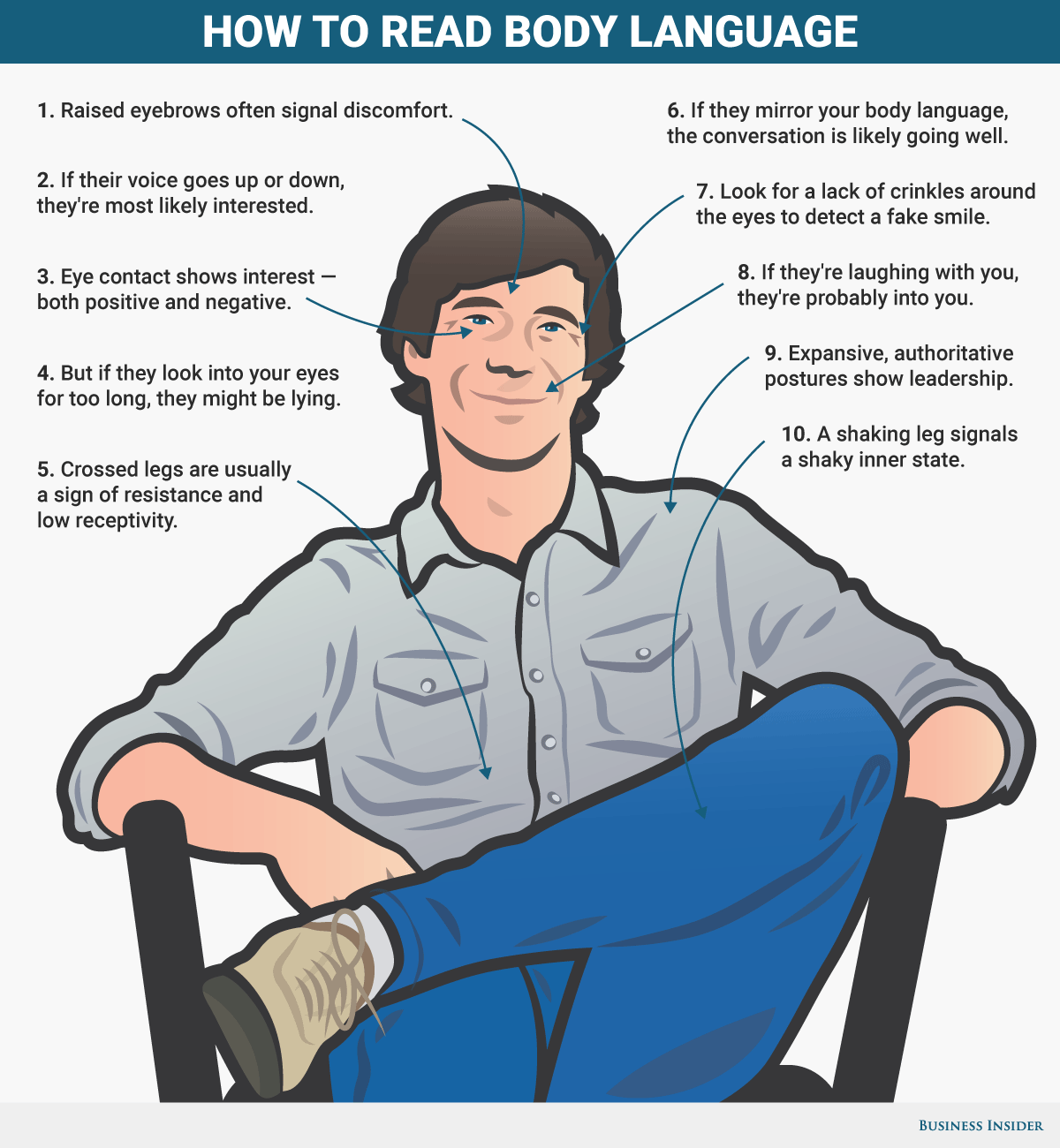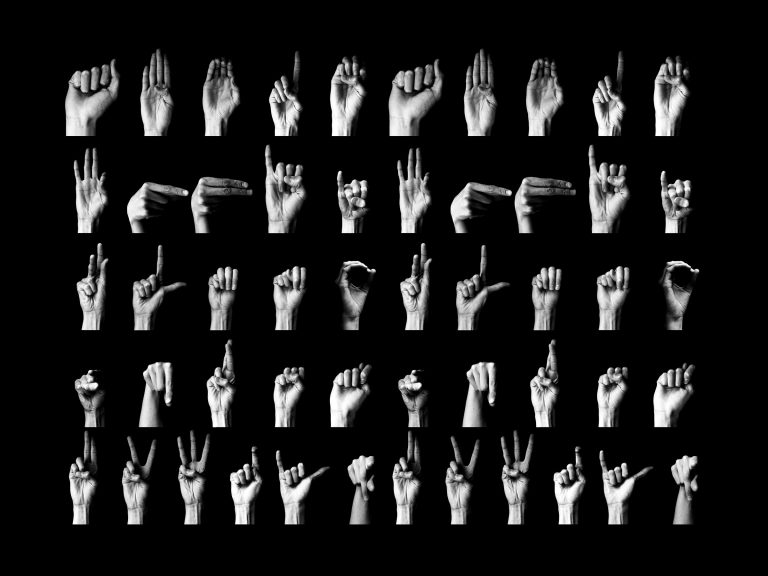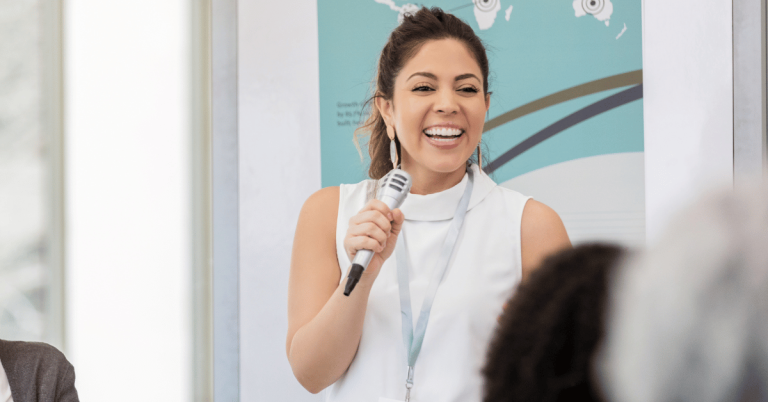What Does Your Body Language Say About You?
Did you know that your body language can speak volumes about you without even uttering a word? It’s true! Your posture, gestures, and facial expressions can convey a lot of information about your thoughts, feelings, and intentions. So, what does your body language say about you? Let’s dive in and explore this fascinating topic together!
In this article, we’ll uncover the hidden messages behind different body language cues and discover how they impact the way others perceive you. Whether it’s a confident stance, folded arms, or a genuine smile, each gesture tells a unique story about your personality and emotions. So, get ready to decode the secret language of body movements and gain a deeper understanding of yourself and those around you.
Throughout this exploration, we’ll also provide practical tips on how to improve your body language to communicate effectively and build stronger connections with others. Are you ready to unlock the mysteries of non-verbal communication? Let’s decode the fascinating world of what your body language says about you!
Discover the fascinating world of body language and what it reveals about you! Your nonverbal cues speak volumes about your emotions and intentions. From facial expressions to posture, learn how to decode the secret language of the body. Understanding your own body language can help you improve communication and build better relationships. Explore the hidden messages behind your gestures and gain insight into how others perceive you. Start unlocking the mysteries of body language today!

What Your Body Language Says About You
Body language is a powerful form of communication. It reveals a lot about a person’s thoughts, feelings, and even their personality. From the way we stand to the gestures we make, our body language can speak volumes about who we are. In this article, we will explore the various aspects of body language and what they say about us.
The Power of Posture
Posture is one of the key elements of body language. How we stand, sit, and hold ourselves can communicate a great deal about our confidence, openness, and engagement. Good posture conveys confidence, while slouching or hunching can imply insecurity or disinterest.
In addition to confidence, posture can also reveal someone’s personality traits. People with open and expansive postures are often seen as more assertive and dominant, while those with closed-off and hunched postures are perceived as less confident and submissive.
Moreover, our posture can also influence how we feel about ourselves. Research has shown that adopting a power pose, such as standing tall with hands on hips, can actually boost confidence levels and reduce stress.
The Language of Gestures
Gestures play a crucial role in nonverbal communication. From the way we use our hands to the expressions on our face, gestures can either reinforce or contradict our spoken words. For example, crossing our arms can be a defensive gesture that signals resistance or disagreement.
Facial expressions are particularly important in conveying emotions. A genuine smile, for instance, can indicate happiness and friendliness, while a furrowed brow may suggest concern or anxiety. Similarly, eye contact is another powerful nonverbal cue that can signal interest, attentiveness, or even attraction.
It is important to note that the meaning of gestures can vary across different cultures. What may be considered appropriate or polite in one culture may be seen as offensive or inappropriate in another. Therefore, it is essential to be mindful of cultural differences when interpreting body language.
The Influence of Touch
Touch is a universal form of communication that can convey a wide range of emotions and intentions. A warm handshake, for example, can create an immediate connection and establish trust, while a pat on the back can communicate support and encouragement.
However, it is crucial to be aware of personal boundaries and cultural norms regarding touch. In certain contexts, touching someone without their consent can be seen as invasive or inappropriate. Respect for personal boundaries is essential to ensure positive and respectful communication.
Moreover, the intention behind touch is just as important as the touch itself. The same physical contact can have different meanings depending on the relationship between the individuals involved. A touch between friends may be seen as affectionate, while the same touch between strangers may be perceived as intrusive.
Spatial Awareness and Proximity
How we navigate and utilize personal space can also reveal a lot about our comfort levels, relationships, and cultural background. Each person has an invisible bubble of personal space, and the distance between individuals can communicate different messages.
Standing too close to someone may be seen as invasive, while keeping too much distance can signal disinterest or a lack of engagement. Understanding and respecting personal boundaries and cultural norms regarding personal space is crucial for effective communication and building rapport.
Cultural differences play a significant role in spatial awareness and proximity. In certain cultures, close physical proximity is more common and accepted, while in others, more distance is preferred. Being mindful of these differences can help avoid misunderstandings and misinterpretations.
The Role of Microexpressions
Microexpressions are fleeting facial expressions that can reveal a person’s true emotions, often involuntarily. These brief expressions can provide valuable insights into someone’s thoughts and feelings, even if they are trying to conceal them.
For example, a quick flash of disgust or contempt may reveal hidden disapproval, while a subtle twinkle in the eye can suggest genuine excitement or amusement. These microexpressions can occur in a fraction of a second and can be incredibly revealing for those who know how to recognize them.
Learning to read and interpret microexpressions can be a valuable skill, particularly for professionals in fields such as law enforcement, psychology, or sales. By understanding these subtle cues, one can better understand and connect with others on a deeper level.
Confidence vs. Insecurity
Confidence is often associated with positive body language, while insecurity tends to manifest in more negative cues. Confident individuals typically display open and relaxed postures, maintain good eye contact, and use gestures to support their words.
In contrast, insecure individuals may exhibit closed-off or defensive postures, avoid eye contact, and display nervous gestures such as fidgeting or playing with their hair. These cues can both reflect and reinforce feelings of insecurity, and they can impact how others perceive and interact with them.
Building confidence in one’s body language can have a significant impact on how one is perceived and can contribute to personal and professional success. By consciously shaping and adopting confident body language, individuals can project a more positive image and project confidence to others.
Benefits of Understanding Body Language
Understanding body language goes beyond being able to interpret others’ nonverbal cues. It also allows us to better control, manage, and project the messages we send through our own body language. By becoming more aware of our own nonverbal signals, we can become more effective communicators and enhance our relationships and interactions with others.
Tips for Improving Body Language
Improving body language starts with self-awareness. Pay attention to your own postures, gestures, and facial expressions in different situations. Are they aligned with your desired message? Are there any gestures or habits that may be sending unintended signals?
Practice adopting confident postures and gestures, even if you don’t feel particularly confident at the moment. Research shows that the mind and body are interconnected, and by consciously altering our physical behavior, we can influence our mental state.
Additionally, observe and learn from others who have strong, positive body language. Take note of their postures, gestures, and facial expressions, and try to incorporate those elements into your own communication style.
Conclusion
Body language is a powerful tool that can greatly influence how we are perceived and understood by others. By understanding the various aspects of body language, from posture and gestures to touch and spatial awareness, we can enhance our communication skills and strengthen our relationships. With self-awareness and practice, we can become more conscious of the messages we are sending through our body language and make positive changes that will positively impact our personal and professional lives.
Key Takeaways: What Your Body Language Says About You
- Your body language reveals a lot about your emotions and personality.
- Crossed arms may indicate defensiveness or discomfort.
- Eye contact shows attention, interest, and confidence.
- Smiling can portray friendliness and approachability.
- Posture can reflect confidence or lack thereof.
Frequently Asked Questions
In this section, we’ll explore the importance of body language and what it can reveal about you. Understanding how nonverbal cues can speak volumes is essential for effective communication. Let’s dive into some commonly asked questions on this topic!
Question 1: How does body language influence our communication?
Body language plays a significant role in communication, sometimes even more than the words we use. Our gestures, facial expressions, and posture can convey emotions and intentions, shaping how others perceive us. For example, crossing arms might signal defensiveness or distance, whereas maintaining eye contact shows engagement and attentiveness. Being aware of your body language helps convey your message accurately and promotes better understanding between people.
Furthermore, body language can reveal hidden emotions or thoughts that someone might not express verbally. For instance, fidgeting may indicate nervousness or restlessness, while a genuine smile can convey warmth and friendliness. Understanding these nonverbal cues enables us to interpret others’ intentions and feelings more accurately, leading to clearer and more effective communication.
Question 2: Can body language affect our first impressions?
Absolutely! First impressions are often formed within seconds, and body language plays a crucial role in shaping them. When meeting someone for the first time, nonverbal cues can influence how they perceive you. For instance, standing tall with an open posture exudes confidence and approachability, while slouching or avoiding eye contact may convey disinterest or insecurity.
Moreover, handshakes, a common nonverbal greeting, can also leave a lasting impression. A firm handshake is often associated with confidence and professionalism, while a weak handshake can be interpreted as lack of assertiveness. These initial nonverbal signals set the tone for future interactions, making it important to be mindful of your body language when meeting new people.
Question 3: Can we use body language to build rapport with others?
Definitely! Body language can help build rapport and establish a stronger connection with others. Mirroring or matching the nonverbal cues of the person you’re interacting with can lead to a sense of familiarity and understanding. For example, if someone is sitting in a relaxed position, you might adopt a similar posture to create a comfortable atmosphere.
Another way to build rapport is through active listening, which includes maintaining eye contact, nodding to show attentiveness, and using appropriate facial expressions. These nonverbal cues indicate that you’re fully engaged in the conversation, making the other person feel valued and understood. By aligning your body language with the person you’re communicating with, you can establish trust and strengthen your connection.
Question 4: Can body language affect our confidence levels?
Absolutely! Your body language not only reflects your confidence but, interestingly, it can also influence it. Adopting a “power pose” – standing tall, with an open stance and assertive posture – for a few minutes can actually boost your confidence levels. Research suggests that this high-power body language can elevate testosterone levels and reduce stress hormones, leading to increased confidence and a more positive self-perception.
Conversely, adopting “low-power poses” – slouching or making yourself appear smaller – can have the opposite effect, reducing confidence levels. Paying attention to your posture and consciously using open and confident body language can not only enhance your self-confidence but also impact how others perceive you.
Question 5: How can we interpret body language cues in different cultural contexts?
Interpreting body language across different cultures requires sensitivity and awareness. While some nonverbal cues may have universal meanings, others can vary significantly depending on the cultural background. For example, direct eye contact can be seen as a sign of respect in Western cultures, while in certain Asian cultures, it might be considered rude or challenging.
To avoid misunderstandings, it’s essential to educate yourself about the cultural norms and body language of the specific culture you’re interacting with. Observing and adapting to the nonverbal cues of others while being mindful of your own can foster better cross-cultural communication and prevent unintentional offense.
Summary
Our body language can speak louder than words, revealing our thoughts and emotions. When we cross our arms, it may show defensiveness or resistance. On the other hand, open and relaxed gestures display confidence and approachability. Maintaining eye contact indicates trustworthiness and interest. Leaning in towards someone signifies engagement and active listening. It’s important to be aware of our body language and the messages we convey to others.
Nonverbal cues can influence how others perceive us and impact our relationships. By understanding body language, we can become better communicators. Simple things like standing tall and maintaining a relaxed posture can help us exude self-assurance. By practicing good eye contact and using open gestures, we can foster trust and connection. Remember, our body language speaks volumes, so let’s make sure it’s saying what we want it to say.

